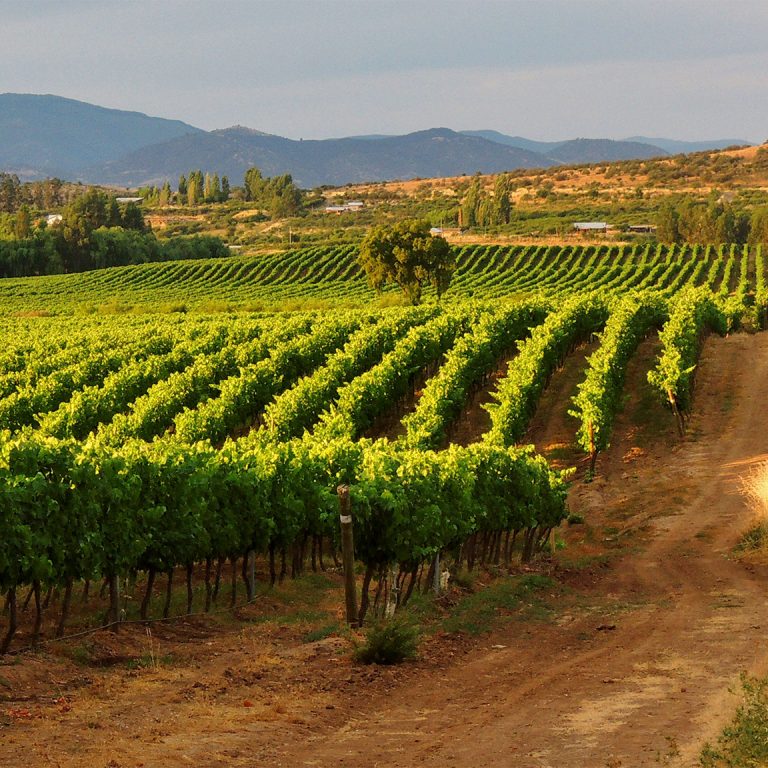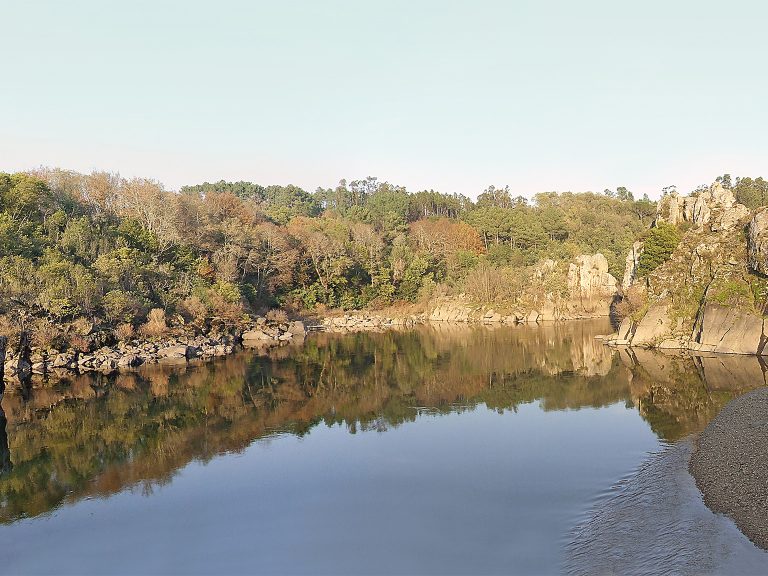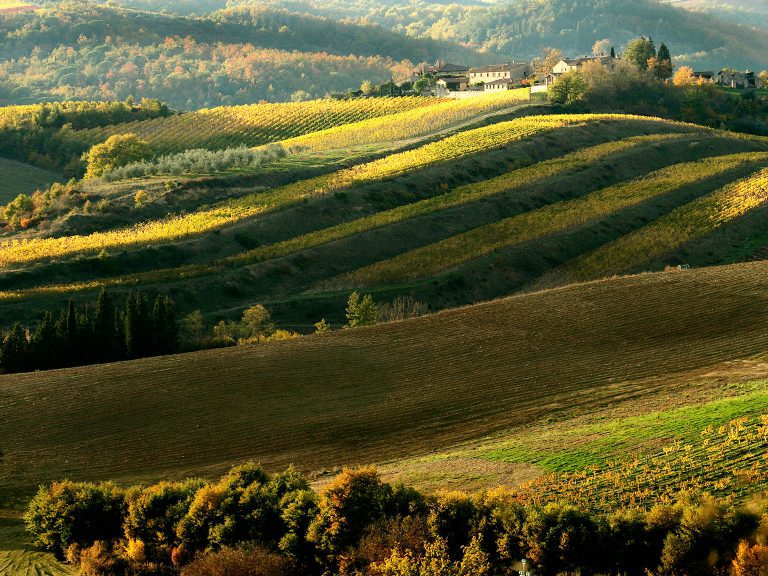This advertising content was produced in collaboration with our partner, Wines of Chile.
Chile was at the forefront of sustainability in the wine world well before it was fashionable. As a result, growing grapes and producing wines that respect the land from which they come is a crucial part of Chile’s wine DNA. Indeed, Chile is a leader in the techniques and technologies that leave the land more nourished after being planted to wine grapes, and respect local plant and animal life. The focus on sustainability isn’t limited to the natural environment, but also includes the people who work in the vineyards, making Chile a model for social responsibility.
That care for the land and people results in a range of wines that express the regions, appellations, and vineyards from which they come with a stunning sense of clarity. After all, with such a diversity of soils, climates, exposures, elevations, and more, Chile can produce game-changing expressions of grape varieties that run the gamut from international to niche.
From the warmer climes of the north to the chillier ones heading south toward Patagonia, producers all over the country have a knack for creating wines that overdeliver for the price every single time. Brisk, layered Pinot Noir isn’t as affordable anywhere else in the world as it is from Chile. Sauvignon Blancs from windswept vineyards close to the coast are among the most mouthwatering and food-friendly available. Higher-altitude reds, from vineyards above the fog line that benefit from both strong sunlight and chilly nights, are capable of aging for decades—yet are available for a fraction of the price the same level of quality might command in other regions of the world. That’s the beauty of wines from Chile.

Don’t miss the latest drinks industry news and insights. Sign up for our award-winning newsletters and get insider intel, resources, and trends delivered to your inbox every week.
Geography
It’s often said that Chile is the only major wine-producing country where you can ski in the morning and surf in the afternoon. With an average width of just 110 miles, grapes grown throughout Chile benefit from a unique combination of influences: The Andes in the east, the Pacific Ocean to the west, and the valleys and Central Mountain range that lies between the two. Add to that a north-south distance of 2,654 miles, and the diversity of micro-climates is seemingly infinite.
The Andes run along Chile’s eastern border with Argentina, from the desert north to the more verdant south of Patagonia. But those towering mountains provide more than just altitude changes: as a result of the breezes that sweep into the valleys below, they provide a perfect cooling counterpoint to the ample sunshine, resulting in wines of balance and tension. Add to that a panoply of sedimentary soils, and Chile has all the ingredients necessary for world-class wines.
On the other side of the country, the Pacific provides a similarly moderating influence on temperatures. This far south, the waters are fed by the Humboldt Current, a cold, rich locomotive of water that carries 20 percent of the world’s fresh fish supply and brings ashore cool winds that collide with the chilly air of the Andes. The result is a brisk coastal climate perfectly suited to white wines and cool-climate reds.
Yet, it’s the Central Valley that has been associated with the wines of Chile for the longest. Tucked in between the Andes to the west and the Coastal Mountains to the east, the Entre Cordilleras, as it’s known, boasts a fantastic variety of terroirs tied together by their sedimentary soils, Mediterranean climate, and cool nights that act as a counterpoint to warm, sunny days. Here, the reds are famously rich in both flavor and aging potential.
History
Chile may be one of the most exciting wine-producing countries in the world right now, but it’s been a standout for close to half a millennium. In 1540, Chile was conquered by Pedro de Valdivia, who on September 4 of that year was so impressed by the land’s potential for grape-growing that he wrote a letter to King Philip II of Spain. In it, he called Chile a paradise for grapevines and promptly requested that more be sent to take full advantage of the land. The king agreed, which is why September 4 continues to be celebrated as Wine Day in Chile.
Over 400 years later, Chilean landowners turned to France for inspiration, many undertaking the arduous journey to France to learn from the legends of Bordeaux. Some even returned with clippings. In the decades that followed, Chile remained immune to the onslaught of phylloxera, which went on to decimate much of Europe’s vineyard land, plus those of many other wine-producing regions worldwide. As a result, to this day Chile’s vineyards have the unusual distinction of largely being planted on their own original rootstock. (In fact, in a nice bit of historical symmetry, a Chilean wine from Santa Carolina won a gold medal at the 1889 Exposition Universelle in Paris.)
Fast-forward to 1949, and Wines of Chile was born. It remains the oldest private, non-profit wine organization in the New World established to promote the image and quality of the country’s wines. Then, 31 years later, Miguel Torres arrived from Spain and turbocharged Chile’s wine industry. His introduction of modern winemaking techniques, such as the use of stainless-steel tanks, French oak barrels, and more led to a wholesale transformation of the Chilean wine world. New plantings surged, exports grew, and between 1995 and 2002, the total amount of land under vine doubled.
Key Regions
There are 16 political regions in Chile—Arica and Parinacota, Tarapacá, Antofagasta, Atacama, Coquimbo, Valparaíso, Metropolitana de Santiago, O’Higgins, Maule, Ñuble, Bío Bío, Araucanía, Los Ríos, Los Lagos, Aysén, and Magallanes. However, it’s best to focus on six main wine regions when it comes to Chilean wine. These are Atacama, Coquimbo, Aconcagua, Central Valley, Sur, and Austral, divided into 17 sub-regions, and beyond that, eight zones. These more or less equate to the denominations of origin that are so important to the world of European wine. Leyda, Colchagua, and Cachapoal are among the best-known.
In a country like Chile, with such a fantastic range of terroirs and climates, these regions, sub-regions, and zones provide a sense of context for the wines grown and produced in each. They also serve as a guide for professionals and consumers alike in predicting how a particular grape variety is likely to express itself from one location to the next.
Atacama
Well north of Santiago—more than 300 miles, to be precise—Atacama is, for the most part, a dry, desert-influenced region. This is why so many of the region’s producers are perched near the Pacific, where water and wind make grape-growing a far more practical option.
The wines are remarkable, exhibiting a balance between the generosity of the region’s hot sun, long days, and brisk breezes arising from the coastal location. Sub-regions like Copiapó and Huasco, for example, are increasingly renowned for their Sauvignon Blanc, Chardonnay, and Pinot Noir. This is a region to watch.
Coquimbo
Located a bit closer to Santiago but still approximately 250 miles to the capital’s north, Coquimbo is divided up into three sub-regions: Elqui Valley, Limarí Valley, and Choapa Valley. Coquimbo was an important source of table grapes in the past, but these days, it’s the wonderfully refreshing wines that are grabbing most of the attention.
The Elqui Valley, long a source of fruit used in pisco, is now regarded as a hotspot for Syrah, among other varieties. And because of its altitude—there are vineyards here planted over 6,500 feet above sea level—it has the honor of being Chile’s highest region.
Limarí is also an increasingly talked-about sub-region. It has the distinction of growing grapes cooled by the Pacific fog in the morning, which lengthens the growing season and provides a perfect counterpoint to the Andean sunshine of the afternoons. Key producers include Viña Tabali, a real standout.
Aconcagua
Mount Aconcagua is the highest mountain in South America, and its influence in this eponymous region cannot be overstated. The altitude of even the foothills influences the region’s viticulture, but the volume of natural irrigation it provides has a lasting impact on the wines produced here. In Aconcagua, Errázuriz planted Syrah in the 1990s, the first of those vines to sink their roots into Chilean soil.
Casablanca is arguably its most famous sub-region, and given its proximity to the coast—it’s just 47 miles northwest of Santiago—it’s no wonder that the wines produced here are so famously crisp and vibrant. Chardonnay and Sauvignon Blanc are its calling cards, though Pinot Noir is coming on strong.
For a feel for what Aconcagua is capable of, look to wines from Errázuriz, Alto Reserva, Alto Vuelo, William Cole, Albamar, Veramonte, Matetic, Cono Sur, Koyle, and Garcés Silva.
Central Valley
The Central Valley of Chile is where many of the best-known wines come from and where so much of the international market finds its footing. Still, given the nature of Chile’s terroir and the rapid changes in micro-climate that mark the wine regions here, there is incredible diversity from Maipo to Maule. It’s impossible to paint the Central Valley with too broad a brush; instead consider its main sub-regions.
The Maipo Valley traces its winemaking history back to the colonial era. Today, however, it’s best known for its generous Cabernet Sauvignon, Merlot, Syrah, and Carménère. And given its location—a little more than a half-hour drive south from Santiago—Maipo is also an important wine-tourism destination. Look for wines from Escudo Rojo, Santa Rita, Viña San Pedro, Santa Ema, De Martino, and Odfjell.
Further south of Santiago, the Rapel Valley is where fans of rich reds and red blends find so much to love. Cachapoal is home to Cabernet Sauvignon that rivals the complexity of Bordeaux and the generosity of Napa, and further west, near the Coastal Mountains, Carménère sings a particularly beautiful song. Wines from Natura and VIK are good examples.
Located in the far south of the Rapel Valley is Colchagua, where Cabernet Sauvignon, Carménère, Syrah, and Malbec thrive, especially near the center of the sub-region. Closer to the coast, however, more linear styles of wine are on the rise, particularly the haunting Pinot Noirs of the region. Check out the wines of Concha y Toro, Casa Silva, Ventisquero, La Playa, Los Vascos, Toro de Piedra, Montes, Lapostolle, Maquis, and Root: 1.
Other notable Central Valley producers include Aromo, TerraNoble, Via Wines, and Bouchon in Maule, and Aresti, Echeverría, and Miguel Torres in Curicó.
Sur
Heading south, the Sur, or Southern Region, is most commonly divided into the three main valleys. Itata is 250 miles south of Santiago, and home to an increasingly vibrant range of wines from previously overlooked varieties like País, Cinsault, and Muscat, though international varieties also thrive here.
Bío Bío and Malleco, more than 300 miles south of Santiago, benefit from a long growing season. However, grape-growing can be challenging, given the strength of the winds, volume of rainfall, and cooler climate. Still, when grown with care and attention on the region’s alluvial, clay, and sandy soils, the resulting Pinot Noir, País, Chardonnay, Sauvignon Blanc, and more can reach astounding heights. El Compadre is a name to look for among the wines produced here.
Austral
Currently only about 75 vineyard acres are planted in this southerly region historically dominated by livestock and dairy farms. However, the potential is tremendous, and since the first vineyards were planted in 2000, pioneering producers have found ways to leverage the volcanic and clay-based soils to craft remarkably vibrant wines, despite—or perhaps thanks to—the rainy, chilly temperatures.
Key Grape Varieties
The history of grape varieties in Chile is fascinating. Cabernet Sauvignon, Merlot, Cabernet Franc, Carménère, Sémillon, and Sauvignon Blanc all find their figurative roots in the 19th century’s Bordeaux influence on winemaking—though, of course, modern producers have put their distinct stamp on the wines. Carignan, País, and others with more Mediterranean roots, introduced by the Spanish, nod to a different set of enological influences.
White Grapes
Sauvignon Blanc
Like the best expressions of Sauvignon Blanc around the world, Chile’s boast all of the mouthwatering freshness that makes them so delicious with fish and seafood, and the sense of mineral structure that only the finest examples possess. Chile’s proximity to the Pacific highlights this, and the Sauvignon Blancs of the Casablanca Valley are profound.
Chardonnay
Chile is perfectly situated for the production of world-class Chardonnay. After all, it’s such a transparent grape variety, and its ability to express the land in which it’s grown is legendary. In Chile, it excels in warmer areas, producing generous, ripe wines. In cooler sub-regions like Limarí, the mineral structure and focus shimmers. The breadth of Chardonnay in Chile is excellent.
Riesling
The cool-climate regions south of the country’s capital have become notable hotspots for this variety, producing wines with lift, structure, and mouthwatering brightness alongside citrus and orchard fruit flavors.
Sémillon
Currently experiencing something of a rebirth in Chile, Sémillon is increasingly being crafted into memorable, age-worthy wines, with its propensity to experience noble rot being leveraged in unexpected, delicious ways.
Viognier
While it may not be one of Chile’s calling cards yet, Viognier is increasingly grown in the warmer regions of the country that allow its inherently textural, aromatic character to shine.
Red Grapes
Cabernet Sauvignon
The classic red grape variety of Bordeaux’s Left Bank produces some of the greatest wine in Chile. The Maipo, Aconcagua, Colchagua, and Cachapoal Valleys are absolutely perfect for the growth of this variety. Abundant sunshine and cool evenings allow the Cabernet Sauvignons produced there to shimmer with figs, currants, chocolate, and more.
Merlot
Merlot may have caught on in Chile in the early 1990s, but it’s been planted for well over a century. The wines have all the velvety texture and palate-coating fruit that connoisseurs clamor for.
Carménère
Carménère reaches its peak of quality in Chile and nowhere is it more highly regarded than in the Colchagua Valley, where more of it is planted than anywhere else in the world. (It’s originally French, but it no longer can be found in France.) Classically lifted with spice notes alongside red fruit and an undertow of earthiness, Carménère is a versatile, deeply expressive grape variety.
Syrah
Syrah fans tend to gravitate either toward a more assertively black-fruited Australian Shiraz style or the more peppery, mineral Syrah of the Rhône. Chile offers both and seemingly every gradation in between, depending on where it’s grown. It’s fair to say that Chilean Syrah is among the most diverse in the world right now—and the best producers are taking full advantage of its tremendous potential.
Cabernet Franc
One of the secret weapons in the blending arsenal of red-wine producers in Chile, Cabernet Franc is used to lend herbal and floral lift to heartier Cabernet Sauvignon and more plushly fruited Merlot.
Carignan
This variety reaches its peak in Maule, where the rains allow it to ripen deep into the season, resulting in wines of assertive tannic structure, magnified acidity, and beautiful, dark color.
Cinsault
Most notably produced in the Itata Valley, Chilean Cinsault (it’s originally from the south of France) is the source of an increasing amount of fresh, easily lovable wines whose exuberant fruit character is hard to resist.
Malbec
Malbec has had a home in Chile since the 1800s, and today, it’s as good as ever: Elegant and smooth, with plenty of fruit and earthy character, and impeccable alongside grilled beef.
País
This variety may have come to Chile with the Spanish in the 16th century, but it’s just recently that its full potential is being realized: In the south-central part of the country, some of the most exciting País wines in the world are being made right now.
Petit Verdot
An important part of some red blends in Chile, as it is in Bordeaux, and notable for its high tannins and deep color.
Pinot Noir
San Antonio, Casablanca, and Bío Bío are increasingly being recognized as the source of cool-climate Pinot Noir as profound and layered as any in Burgundy.
What’s Happening Today in Chile
Chile is one of the most dynamic, exciting, and accomplished countries in the world of wine right now—and it’s poised to achieve even greater heights. Much of this is due to its passionate embrace of sustainability, an area in which it is already a world leader. Back in 2011, the Sustainability Code for the Chilean Wine Industry set forth very high standards that growers and producers have embraced with a passionate sense of commitment. Today, 80 percent of the wine that Chile exports is certified as sustainable.
This focus on the environment doesn’t end there: From lightweight bottles, which save on materials and shipping fuel, to creative uses of winemaking byproducts like pressed grape skins, Chile offers the rest of us a glimpse into the future of responsible winemaking.
And when it comes to taking advantage of the sheer range of Chile’s natural environment, the wine industry is leading the way. From Montes planting white grapes a mere 15 meters from the Pacific in the Chiloé archipelago, to ever-higher vineyards that leverage the altitude of the Andes, to wines grown in Atacama’s desert climes, the future of Chile’s most exciting wines is as diverse and full of promise as it’s ever been.









